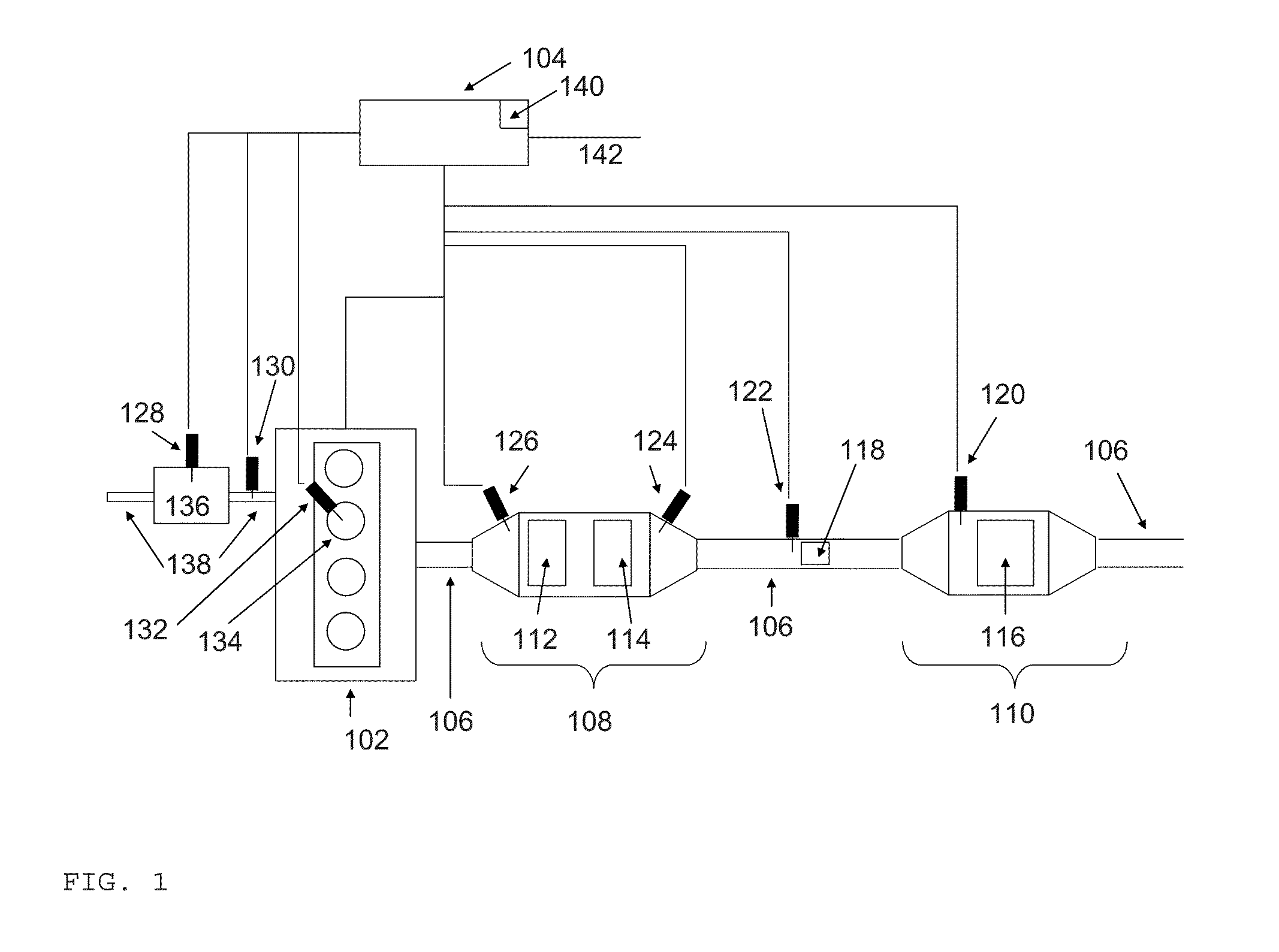Radio Frequency Process Sensing, Control, And Diagnostics Network
a technology of process sensing and control, applied in the direction of transmission monitoring, electrical control, machines/engines, etc., can solve the problems of time delay, additional variability, and inability to optimize or detect processes efficiently, and achieve the effect of optimizing the process
- Summary
- Abstract
- Description
- Claims
- Application Information
AI Technical Summary
Benefits of technology
Problems solved by technology
Method used
Image
Examples
Embodiment Construction
[0018]FIG. 1 depicts a plant such as an engine and exhaust system monitored by a radio frequency system. The plant may be any type of plant, such as a chemical plant, food processing plant, power plant, refinery, distillery, or any type of plant or process. The plant or reactor may be a flowing reactor, or it could be a batch reactor.
[0019]A machine 102, such as an engine in one example or a plant in another example, may have outlet connection, such as a conduit 106, which may be connected to various components and sensors. Machine 102 may generate an output stream, such as an exhaust stream, or any other stream, which may or may not be directed through conduit 106. In one embodiment, conduit 106 may be connected to a first module 108 and a second module 110. In one embodiment, modules 108 and 110 may be cavities, such as resonant cavities, or may be waveguides in another embodiment.
[0020]In a particular embodiment, module 108 may be particulate filter housing, such as a gasoline pa...
PUM
 Login to View More
Login to View More Abstract
Description
Claims
Application Information
 Login to View More
Login to View More - R&D
- Intellectual Property
- Life Sciences
- Materials
- Tech Scout
- Unparalleled Data Quality
- Higher Quality Content
- 60% Fewer Hallucinations
Browse by: Latest US Patents, China's latest patents, Technical Efficacy Thesaurus, Application Domain, Technology Topic, Popular Technical Reports.
© 2025 PatSnap. All rights reserved.Legal|Privacy policy|Modern Slavery Act Transparency Statement|Sitemap|About US| Contact US: help@patsnap.com



